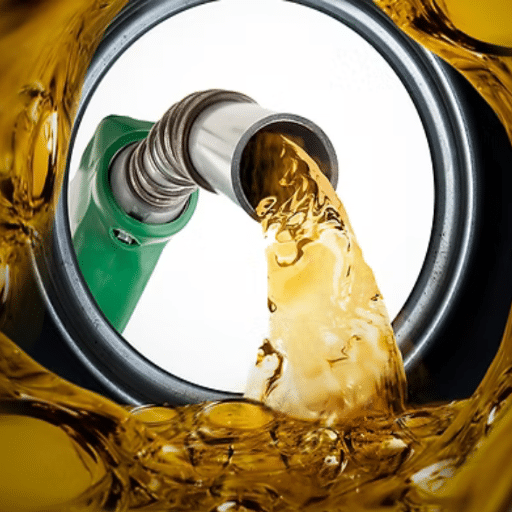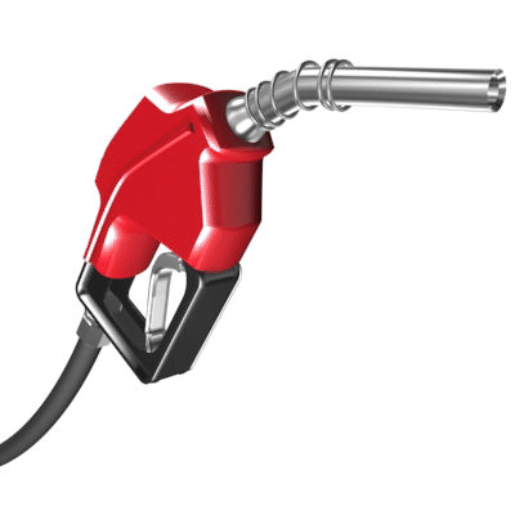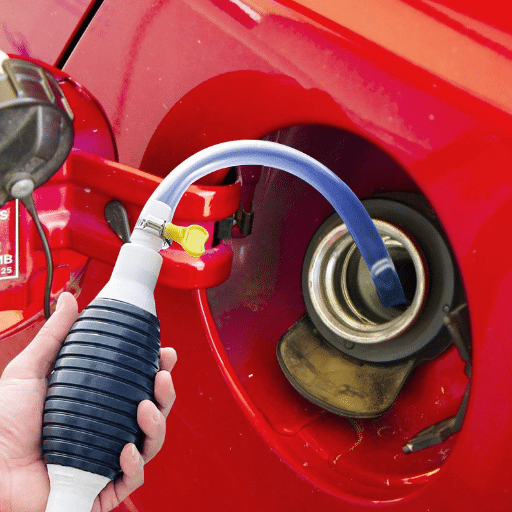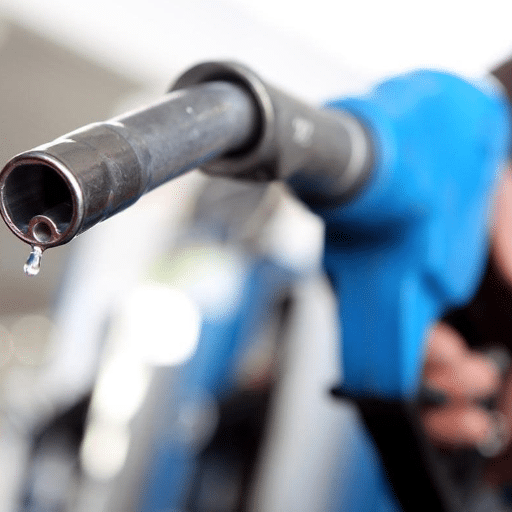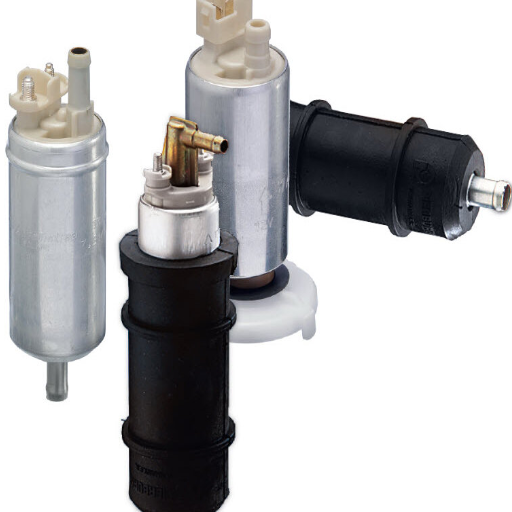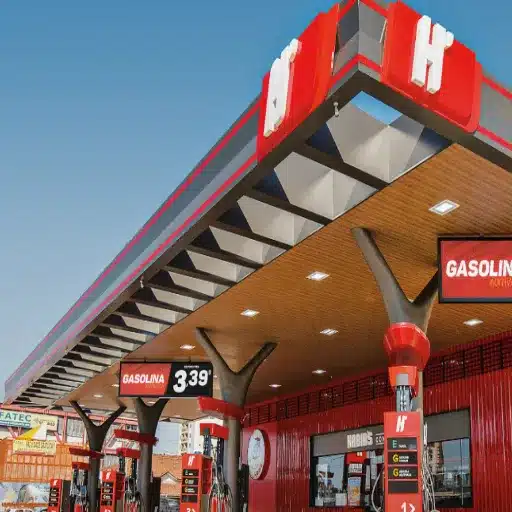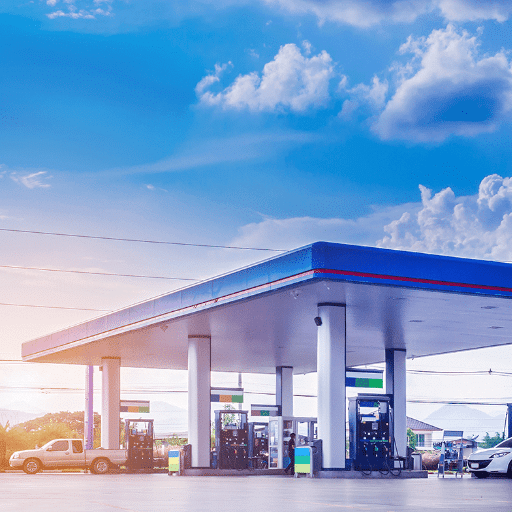Choosing the right fuel for your vehicle is a critical choice that influences its performance, fuel economy, and engine life. One of the most apparent distinctions is offered at the fuel delivery level: diesel pump nozzles versus gasoline nozzles. These pieces are mutually exclusive, and knowing their differences is paramount in preventing a costly mishap at the pump. This article will discuss in detail the physical and mechanical peculiarities of diesel and gasoline nozzles while focusing on why they are different and how these differences appropriately fit with the dissimilar engine requirements characterizing the two types of vehicles, diesel and Gasoline. Thus, at the end, one will have an in-depth idea about these nozzles and will be in a good position to make informed decisions concerning fueling needs for their vehicle.
Introduction to Fuel Nozzles
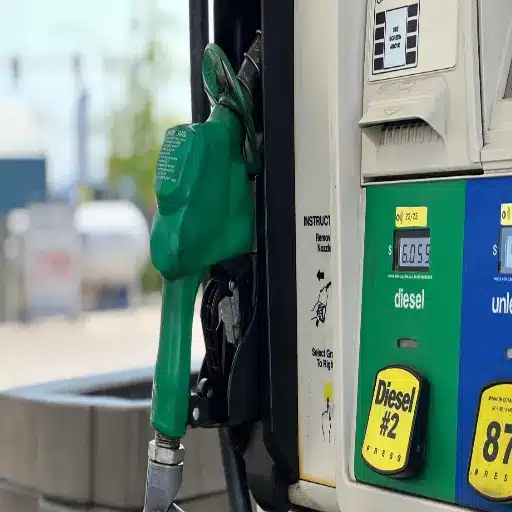
The fuel nozzle is an essential part of the fueling system in a vehicle, allowing the proper and safe dispensing of diesel or gasoline. Diesel fuel nozzles are generally larger in diameter so that a large volume of viscous fuel is discharged into the engine, which is quite necessary in the operation of diesel engines. On the other hand, gasoline nozzles tend to be narrower, corresponding to their lesser viscosity. This difference is intended as a cross-check to minimize human error in misfueling, as most diesel nozzles simply do not fit into the openings on gasoline vehicles. This distinction and design are crucial for ensuring that fuel is properly discharged and that the engine performs well and lasts long.
What is a Fuel Nozzle?
The fuel nozzle is a sophisticated engineering marvel designed to transfer fuel safely and efficiently from the dispenser into the fuel tank of a car. It is the ultimate interface between the fuel pump and the tank, precisely dispensing the fuel while minimizing the possibilities of spillage and vapor emissions. Today, these nozzles come with automatic shutoff features that prevent overfilling by sensing when the tank has become full.
Fuel nozzles are also concocted according to fuel type. Diesel nozzles, for example, are generally larger than gasoline ones because of the higher viscosity of diesel and compatibility considerations of diesel vehicle fuel fillers. Likewise, nozzles for alternative fuels, such as those for compressed natural gas (CNG) and hydrogen, are engineered to handle the special conditions of such fuels, such as high pressure or cryogenics, safely.
From a state-of-the-art standpoint, recent developments in fuel nozzle technologies focus on precision, with minimal environmental impact. Data reveal that nozzle assemblies equipped with recovery systems can hold as much as 95% or more of the fuel vapors escaping into the atmosphere during refueling. This technology, when perfected, realizes a significant reduction in the VOC (volatile organic compounds) emissions into the air, resulting in cleaner air quality.
Each fuel nozzle component, including the spout, the valve, and even the spring-actuated shutoff system, is designed to conform to rigorous regulatory specifications and to ensure the safety of the user. These appliances form the essential part of the fueling infrastructure that supports the fueling of millions of vehicles worldwide while also being capable of adapting to energy demand changes.
Types of Fuel Nozzles
Depending on the application, design, or utilization, fuel nozzles can be classified into several types. Here’s a view into some of these important types:
1. Automatic Shutoff Nozzles
Automatic shutoff nozzles are the most common in today’s modern fueling stations. This type is equipped with an internal pressure-sensing mechanism designed to stop fuel from overflowing in case it starts draining out into the tank. Research has shown that these nozzle types enhance efficiency and safety in minimizing the spillage of fuel to areas that can cause environmental harm. Their accuracy has been instrumental in meeting the tight fuel dispensers’ regulations.
2. Vapor Recovery Nozzles
Designed with environmental conservation in mind, vapor recovery nozzles help prevent the emission of harmful vapors during refueling. The nozzles trap the fuel vapors being displaced from the vehicle tank and channel them into the fuel storage system. Studies have shown that hydrocarbon emissions can be reduced up to 95% by using vapor recovery systems, thus a must in areas where air quality standards are stringent.
3. High-Flow Diesel Nozzles
These high-flow diesel nozzles are located in commercial and industrial settings where truck and bus-type large vehicles require large volumes of fuel. The design is focused on fast fuel delivery without compromising accuracy, as noticed in some models that dispense as much as 60 gallons a minute. They worked out very well in keeping the high usage conditions robust and reliable.
4. Manual Nozzles
They are manually operated; that is, the fuel flow rate is controlled by the operator. Commonly seen in farms and houses in the countryside, where automation is not necessary. Though simple, many designs offer ergonomics for user comfort and are constructed with durable materials for usable life.
5. Smart Fuel Nozzle
Recent developments have brought to the fore smart fuel nozzles equipped with technologies involving sensing and communication. The nozzle is said to be smart as it is capable of real-time data transfer from the petrol flow rate, temperature, to analytics of the customers. An industrialist working on IoT integration can make use of this smart nozzle to improve efficiency in operations and also provide a means for predictive maintenance activities.
Each of these fuel nozzles serves uniquely dictated functions with respect to fueling requirements. Their general design and technical considerations ensure the newest, most efficient, and most environmentally-conscious fuel delivery systems that comply with their respective regulatory measures.
Importance of Choosing the Right Nozzle
The right choice of a fuel nozzle is imperative to optimize the operational performance of a site while also accounting for safety condition requirements and standards laid down by regulatory authorities. In modern nozzle designs, materials used, flow rate limitation, and ergonomic factors have all been considered for greater efficiency. The research shows that high-flow rated nozzles used for fueling can cut fuel time by 30%, which is a significant factor in turnaround time during airport servicing or fleet management. Specialized nozzles with vapor recovery also support environmental initiatives by capturing almost 95% of displaced vapors during fuel dispensing.
Industries need precise nozzle fitments depending on the type of fuel to be dispensed. For instance, using nozzles meant for biodiesel or ethanol blends avoids chemical incompatibility that otherwise would have caused wear or contamination. Selecting the wrong nozzle in terms of alignment can cause inefficiency in operation, equipment failures, or safety hazards. Reliable flow data, thermal resistivity standards, and material durability specifications help pick the best nozzle to get the job done and ensure compliance with environmental and industry standards.
Diesel Fuel Nozzle
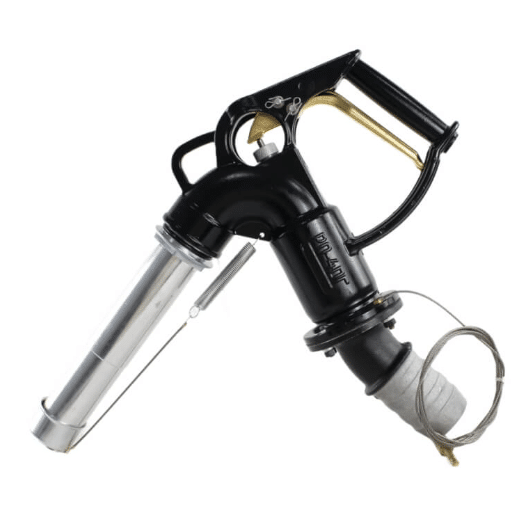
Diesel fuel nozzles serve the primary purpose of fastening fuel into a combustion chamber or a fuel tank efficiently and accurately. They ensure that fuel flows with precision, giving that fuel wastage at a minimum level while supporting top engine performance. By controlling how fast the fuel flows and the pressure at which it flows, diesel fuel nozzles support the production of good combustion, thus good engine efficiency, and less emissions from diesel engines.
Characteristics of Diesel Nozzles
Diesel fuel nozzles are engineered with special features to increase the operational efficiency, durability, and performance of diesel engines. Some of the features instituted are as follows:
- Precision Atomization of Fuel: Diesel nozzles atomize fuel in very fine droplets so that mixing between air and fuel can take place in the combustion chamber, which is extremely important for better combustion and lower emissions.
- Wear Resistance: These nozzles are often made of very high-strength and corrosion-resistant materials such as hardened steel since they have to withstand high pressure for a long time.
- High-Pressure Endurance: The present-day diesel nozzles are capable of working under very high pressures beyond 30,000 psi to convey the fuel with precision and have good engine performance.
- Spray Pattern and Hole Size: The spray pattern and nozzle hole diameter are designed to suit the engine requirements to achieve uniform fuel distribution, thus better combustion.
- Integration with fuel systems: Diesel nozzles are compatible and can actually work with very advanced technologies of common rail systems to ensure synchronized injection at times that are very efficient throughout a range of engine speeds and loads.
Coupled with these features, it brings greater fuel economy, longer engine life, and compliance with emission regulations, thereby making the diesel nozzle a key feature of advanced engine technology.
Working Mechanism of Diesel Fuel Nozzle
Think of a typical diesel fuel injector nozzle as one of the main components in a Diesel engine. Its purpose is to similarly inject atomized fuel into the combustion chamber at high pressure, under accurate measurement. Therefore, the working of the nozzle starts with the high-pressure fuel pump. It pumps fuel through the feed line into the nozzle. Inside the nozzle, the fuel is precisely metered, and the timing of the delivery is also controlled by the operating conditions of the engines, in present times. Among these conditions would be load, engine speed, and so forth.
Said at the most basic level, the nozzle has a spring or solenoid mechanism that controls fuel flow. The nozzle needle remains sealed in its seat until the pressure of the fuel forces its opening after crossing the calibration. Atthe-needle-lifts-when-the-pressure-is-achieved,-fuel-is-released-through-microscopic-spray-holes. These holes are considered microscopic, with sizes generally varying between 0.1 and 0.3 millimeters, and they provide very fine atomization with a wide spray pattern to facilitate mixing with air for combustion.
In recent times, it has found application in the development of high-pressure common rail systems operating above 2,000 bar. These systems, used with advanced nozzles, can deliver several injections within one combustion cycle, thereby improving fuel atomization and reducing particulate emissions. Furthermore, the laser-level drilling of nozzle holes guarantees a fixed spray pattern for uniform combustion in the chamber. Studies show that this technology can increase combustion efficiency by up to 15 percent, simultaneously reducing harmful NOx and particulate emissions to Euro 6 and Tier 4 emission levels.
By operating with such precision and applying the latest technology, diesel fuel nozzles do more than just improve engine power; they also contribute to reduced fuel usage and compliance with environmental legislation in effect nowadays.
Common Uses of Diesel Nozzles
So, in brief, diesel nozzles find use across various fields where fuel injection takes place in diesel engines for some reason or the other. Most commonly, they find application in internal combustion engines in heavy vehicles such as trucks, buses, and tractors, where they aid in the conversion of energy from fuel through atomization at the best possible level. These nozzles are the other chief components of diesel generator sets that solve the power requirements of industries, commercial establishments, and stand-by power systems. Yet again, the diesel nozzles are also used in marine engines that ensure good performance under rough operating conditions. Various types of machines running on diesel fuel, such as construction equipment, also require these diesel nozzles to perform smoothly under heavy-duty operations. A diesel nozzle, through perfect designing and functioning, affords the highest fuel efficiency, emission norms, and system reliability in all these fields.
Gasoline (Petrol) Nozzle
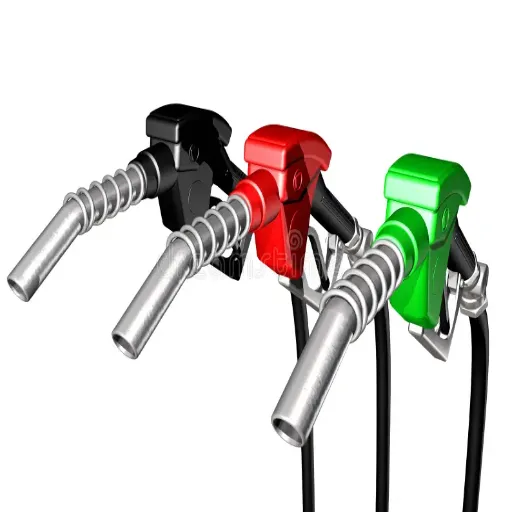
Gasoline (petrol) nozzles are equipped to precisely and adequately deliver fuel into gasoline-powered engines. These nozzles have been specially designed to provide a precise flow rate without allowing any overflows or spills from the nozzle during the actual refueling. Being commonly applied in car refueling stations, they are made safe and convenient to use through automatic shut-off features. For the best engine performance and to prevent fuel wastage, pre-made gasoline nozzles must be selected.
Characteristics of Gas Nozzles
Material Composition
Gas nozzles are primarily made of aluminum or stainless steel to ensure durability and resistance to corrosion, as well as to endure harsh environmental conditions. The selection of polymer components guarantees a good balance of lightweight durability and ergonomics.
Automatic Shutoff Mechanism
Almost all modern gas nozzles are provided with automatic shut-off systems. The mechanism employs vacuum pressure to sense when the fuel tank is almost full and shuts the flow of the fuel on its own to prevent overfills and spills, thereby keeping the user safe.
Flow Rate and Pressure Control
Gas nozzles are designed for the exactness required to control rates of fuel flow steady with the pressure output of the pump. This is to achieve uniform and effective transfer of fuel, hence less chance of vapor lock or engine flooding.
Nozzle Spout Designs
The spout is shaped for the efficient transfer of fuel, yet it fits many different vehicle tank openings. Vapor recovery nozzles may provide additional seals or devices to capture the fuel vapors, thus minimizing emissions and environmental impact.
Ergonomics and User Safety
Ergonomically shaped handles and grips offer ease of use for refueling, especially during the extended period of operations; some models shall have locking triggers that allow the nozzle to flow fuel while users do not apply pressure to the trigger.
Compatibility and Standards
Gas nozzles are designed to industry standards to ensure compatibility with various fuels, including gasoline, diesel, and ethanol blends. Such certifications assure that the procedures can be executed reliably and safely.
Working Mechanism of Gasoline Nozzles
The main operation of gasoline nozzles is a mixed mechanical-hydraulic process to deliver the fuel efficiently. When the nozzle is inserted into the fuel tank and the lever is pressed, a valve opens and allows fuel to pass. The nozzle usually has a venturi tube through which suction is created as gasoline flows, thus maintaining pressure constant.
An important safety feature integrated into gasoline nozzles is the automatic shut-off procedure. This is done by a small tube on the nozzle that senses the pressure of the air escaping from the tank. When filling up, the fuel blocks the vent, which stops the airflow and creates a vacuum; this vacuum actuates the shut-off valve, preventing any spills. Such a mechanism with exactness ensures operations that are efficient, safe, and environmentally friendly.
Common Uses of Gasoline Nozzles
In the refueling infrastructure, gasoline nozzles hold quite important positions and accommodate a wide variety of vehicles, machinery, and equipment. As largely employed at filling stations for the efficient putting of fuel into passenger vehicles, including automobiles, motorbikes, and light trucks, their daily scooter fuel needs in America alone can account for almost 280 million vehicles registered for road use.
Besides serving the consumer vehicles, gasoline nozzles also serve the fueling of heavy-duty machinery such as agricultural tractors, construction vehicles, and industrial equipment. These applications need special high-flow nozzles that can transfer large amounts of fuel efficiently, thus reducing downtime. In agriculture, gasoline-powered machinery is widely used, and it has been reported that the global agricultural tractor market size went north of $60 billion in 2022.
Besides, gasoline nozzles give fuel to any portable equipment, such as generators, lawn mowers, or power tools, sometimes for household or commercial work as well. They ensure that flow rates are followed and spills are avoided, in line with stringent environmental regulations designed to curb emissions from fuel and fuel contamination.
By far, the adaptive nature extends into the realms of aviation and marine, where customized nozzles are made to meet the peculiar needs of aircraft and boats while maintaining precision and safety standards. The very existence of gasoline nozzles only strengthens their need for running industries, transport systems, and day-to-day activities worldwide.
Key Differences Between Diesel and Gasoline Nozzles
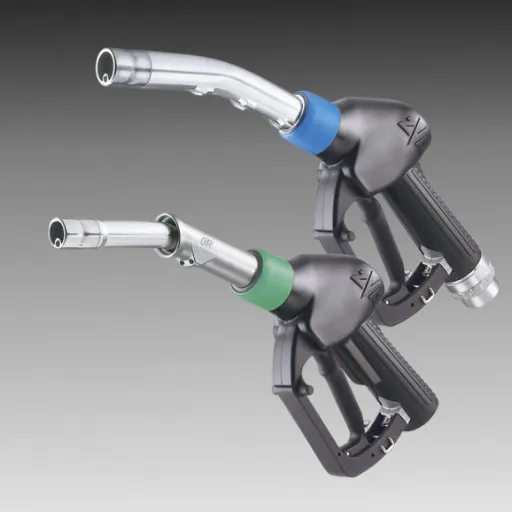
| Feature | Diesel Nozzle | Gasoline Nozzle |
|---|---|---|
| Size and Fit | Larger in diameter to avoid misfuelling. Cannot easily fit into the relatively small filler neck of a gasoline vehicle. | Smaller diameter, designed for narrower filler necks of gasoline vehicles. |
| Pressure Tolerance | Designed to withstand and deliver fuel under higher pressures due to the nature of diesel combustion. | Suited to lower-pressure systems. |
| Fuel Flow Rate | Generally allow for a higher fuel flow rate to accommodate larger fuel tanks and higher consumption rates, especially in commercial and industrial applications. | Lower flow rate designed for typical passenger vehicles. |
| Material Compatibility | Made from materials resistant to corrosion and wear due to compounds in diesel fuel. | Made with materials appropriate for handling the properties of gasoline, which differ from those of diesel. |
In consideration of these differences, diesel and gasoline nozzles indeed are specially designed to meet different operational requirements particular to their fuel.
Fuel Type and Composition
Diesel and gasoline exhibit significant differences in chemical composition and physical properties, thus influencing their nature, application, and performance. The major components that constitute diesel fuel are long-chain hydrocarbons, ranging from C10 to C20, providing a greater energy density and hence better fuel efficiency, especially in high-torque engine environments, which involve heavy loading. It is also treated with additives that enhance its lubricity and engine performance under severe operating conditions. Gasoline, on the other hand, with shorter chains of hydrocarbons anywhere from C4 to C12, is more volatile and ideally suited to spark-ignition engines running at high speeds.
In the different fuels we spoke about earlier, combustion processes differ as much as possible. Diesel is a compression ignition type of engine: air is compressed to high temperatures before fuel injection, and thus produces more power and efficiency. While gasoline engines work with spark ignition, their design requires low compression-ratio engines, producing smooth engine operation. These fundamental characteristics create a barrier in deciding which fuel to use by the application, since heavy damage to engines and efficiency losses may occur otherwise.
Design and Functionality
Combustion engines are thermodynamic systems with a chemical-mechanical construct and have specific variations depending upon the diesel or gasoline system. As diesel engines operate on compression ignition, they are designed with higher compression ratios and are strongly built to withstand the comparatively high thermal and mechanical stresses generated by the combustion of fuel under high pressure. Such a design provides for durability and high mileage and is therefore opposite and contrasted with heavy-duty and commercial-type engines. Gasoline engines, on the other hand, rely on spark ignition and thus ensure much smoother operation at lower compression levels of internal stresses, generally being attuned for light vehicles and faster acceleration profiles.
Diesel engines creatively focus on torque output at lower RPMs and injectors that deliver an accurate measure of diesel fuel, achieving a controlled combustion process. Gasoline engines, by contrast, allow their spark plug arrays to control ignition timing for achieving good performance and low emissions. Both engine types apply advanced technology, such as a turbocharger or direct injection-albeit implemented differently to complement their respective operating cycles. With such a high level of precision in design and functional needs, it becomes imperative to understand engine requirements to streamline performance and efficiency, depending on the application.
Safety Features and Compatibility
Modern engines come with a potpourri of safety measures to ensure that the instant operations remain reliable enough for the user. Important safety features include high-tech sensor systems to detect the engine’s performance and possible failures, i.e., overheating or abnormal pressure levels. These facilities also incorporate the engine control unit (ECU) to automatically curtail or stop operations if such conditions are detected.
Factors that determine compatibility between engines and applications are fuel type, power rating, and operating environment. For example, gasoline and diesel engines need different fuel injection systems and compression ratios according to their respective cycles. Furthermore, to succumb to regulatory compliance, manufacturers install emission control technologies like EGR and SCR that are in line with global requirements, such as those stipulated by the EPA to Euro regulations. Having full knowledge of these compatibility issues would definitely assure the best performance for the engine as well as adherence to environmental regulations.
Choosing the Right Nozzle for Your Needs
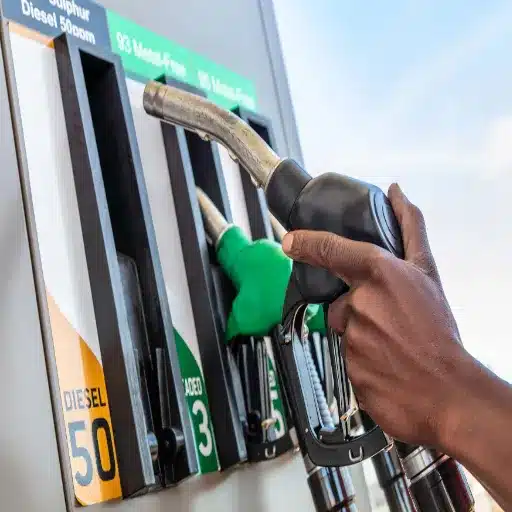
The following three considerations are vital when selecting a nozzle for your application: flow rate, spray pattern, and compatibility of materials. Correct flow rate ensures efficiency in the operation of your system, thereby not burdening or underperforming. Spray pattern selection is based on expected use, such as coating, cleaning, or cooling. And finally, make sure the material used in making the nozzle can handle the fluids involved. If anything adverse could happen, the fluids will corrode or wear the nozzle, thus impeding its operation over time. Always make reference to the manufacturer’s instructions to match specifications and details with your needs.
Factors to Consider
While choosing a spray nozzle, several factors must be considered to guarantee its efficient and optimum working. Depending on the required flow rate and operating pressure, the nozzle performance and adaptability to fit processes may vary. The spray angle also deserves consideration as it defines coverage and overlap, which are very important for anything that needs uniform application, such as cleaning or coating.
Once this has been established, the fluid properties of interest would be viscosity, temperature, and abrasiveness. High viscosity or abrasive fluids can call for a special nozzle design or material so as not to block the nozzle or undergo wastage from wear. In addition, the spray pattern needs to correspond with the application itself; for instance, fan patterns promote uniform distribution, whereas cone patterns target a focused application.
Lastly, consider material compatibility. Depending on your choice of materials of construction, stainless steel, brass, or plastic, your nozzle should resist corrosion, erosion, and chemical interaction with the working fluid. This will ensure a longer working lifespan of your nozzle, will keep the performance levels from degrading, and cut down on maintenance levels. However, in any event, it is always worthwhile to cross-check manufacturer recommendations for the best alternative for your application.
Impact on Diesel Engines vs Gasoline Vehicles
When assessing the impact on diesel engines and gasoline vehicles, I consider several crucial factors. A diesel engine produces higher torque and lower fuel consumption, and hence suits heavy-duty operations. In contrast, these engines usually emit a greater amount of nitrogen oxides or NOx and particulate matter, which are environmental concerns unless they come with proper control technologies. On the other hand, a gasoline vehicle emits less NOx and particulate matter, but usually does not get good fuel efficiency. The choice between the two depends on operational performance, adherence to laws, and the cost of operation in the long term.
Cost Considerations
The total cost of ownership for diesel and gasoline vehicles depends on several things: purchase price, fuel expenses, maintenance, and longevity. Diesel vehicles face higher upfront costs for engine designs and emission control systems. To make up this difference, diesel vehicles will typically have better fuel economy and lower fuel cost per mile, and, with this, it can balance out the initial expense with time for those who put a large mileage on their vehicles. Maintenance-wise, diesel engines are more expensive to fix because they have rugged components and specialized systems, while gasoline vehicles generally have simpler and less costly maintenance. Also, changes in emission regulations may increase the cost of compliance for diesel vehicles, depending on the market, which may impact their long-term viability as a solution. However how best each option will fare depends on usage, local fuel prices, and anticipated vehicle lifespan.
Reference Sources
Frequently Asked Questions (FAQs)
What are the basic differences between a diesel fuel nozzle and a gasoline nozzle?
The basic differences between a diesel fuel nozzle and a gasoline nozzle are size, design, and functionality. Diesel nozzles tend to be larger and thicker as a safety measure against accidental insertion of a diesel nozzle into a gasoline tank. Furthermore, since diesel fuel is heavier than gasoline, the nozzle must accommodate a higher flow rate of diesel fuel. Understanding these differences is crucial when selecting the appropriate nozzle at petrol stations.
What impact might using an incorrect fuel nozzle have on a vehicle?
From engine damage to perhaps costly repairs, the wrong fuel nozzle can be disastrous, especially when diesel is put into a gasoline car. Diesel has quite a different nature compared with gasoline; if the wrong fuel is used, it can cause performance issues that may be corrected through expensive repairs. Therefore, it becomes vital to acknowledge the use of the right fuel dispenser for your vehicle.
Why are fuel nozzles color-coded?
It is a very important safety feature that enables drivers to quickly determine the kind of fuel that is being dispensed. Diesel is generally dispensed through green nozzles, whereas pumps dispensing gasoline are, in most cases, black or red in color. Such a visual cue becomes critical in making the right selection of nozzle type to prevent accidents due to misfuelling at the very dispensing point.
Would a manual fuel nozzle really be deemed suitable for dispensing diesel fuel?
Yes, a manual fuel nozzle can be used to dispense diesel fuel, but it is imperative to ensure the nozzle is specifically made for diesel. Diesel nozzles are larger, mostly for the diesel fuel being thicker, and to avoid accidental fuel transfers to gasoline-powered engines. Always check to confirm you are using the right fuel nozzle so no problems arise.
How do automatic fuel dispensers work at gas stations?
Gas station automatic fuel dispensers were created to simplify the fuel transfer process. They come with facilities, including an automatic shut-off, stopping fuel flow whenever the tank is full, thereby adding to the convenience of use and preventing overfilling and spills, which is a safety feature. Knowing how these dispensers work serves you well when you choose to use them.
Why are the diesel nozzles not interchangeable with the gasoline ones?
Diesel nozzles are not interchangeable with gasoline nozzles because of size and design differences. Diesel nozzles are generally bigger as well as have different flow rates from gasoline nozzles. The difference in design is important to ensure that the driver fills in the right fuel and helps prevent accidental misfueling, which might otherwise cause strange behaviors in an engine.
What are some of the benefits of a higher flow rate diesel nozzle?
Getting your car refueled can be a time-consuming process with high flow rate nozzles, thus germane to a species of acceptance for larger vehicles with bigger diesel fuel tanks. High flow rate nozzles cater to the higher viscosity of diesel or heavier fuels to dispense them smoothly and efficiently. The nozzle choice, whichever offers the highest flow rate, shall always confer a more pleasurable experience upon the user.
Effects of a correct fuel nozzle on vehicle performance
Correct fuel nozzle usage is key to upholding vehicle performance. Use of the right fuel nozzle meant for the particular fuel type of your vehicle will guarantee that the right fuel flows exclusively without any mixing that could lead to misfiring or engine knocking. Consistent use of the correct fuel will always keep your engine healthy and also increase its fuel efficiency.

